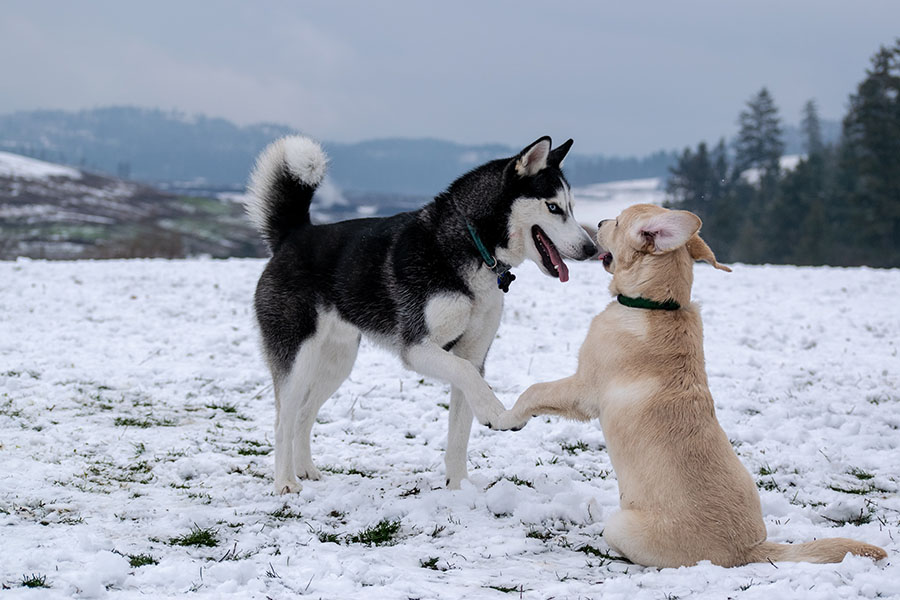
A lot of people around the world own dogs. However, many of those people don’t know anything about what their dogs body language can tell them. Whether the dog is feeling sick, uncomfortable, or is starting to show signs of aggression, it is important to know the difference between the body language that shows their feelings and either help or avoid the outcome of these nonverbal signs. Understanding the difference and importance of these signs could possibly save your dogs life.
Relaxed
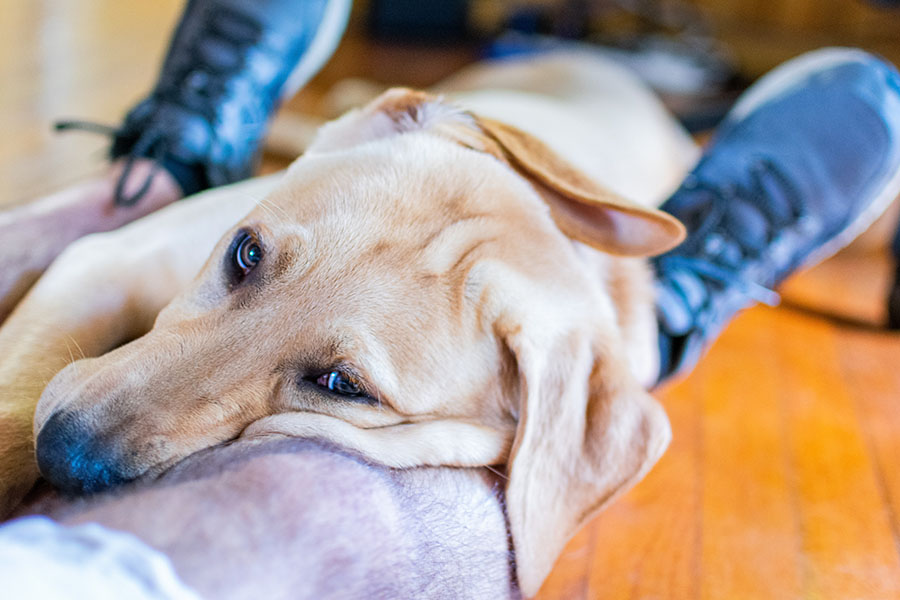
A relaxed dog will typically appear approachable and almost as though they are smiling. Some ways to tell if your dog is relaxed is by their ears, mouth, tail, and their stance. A relaxed dog will possibly have their ears up but not pointed forwards and their mouth might be open and look as though they are smiling or a happy face. Their tail will be loose or relaxed and they will also have a loose stance. If they are relaxed, all of the parts of their body will appear loose as if they are completely comfortable in their environment.
Alert
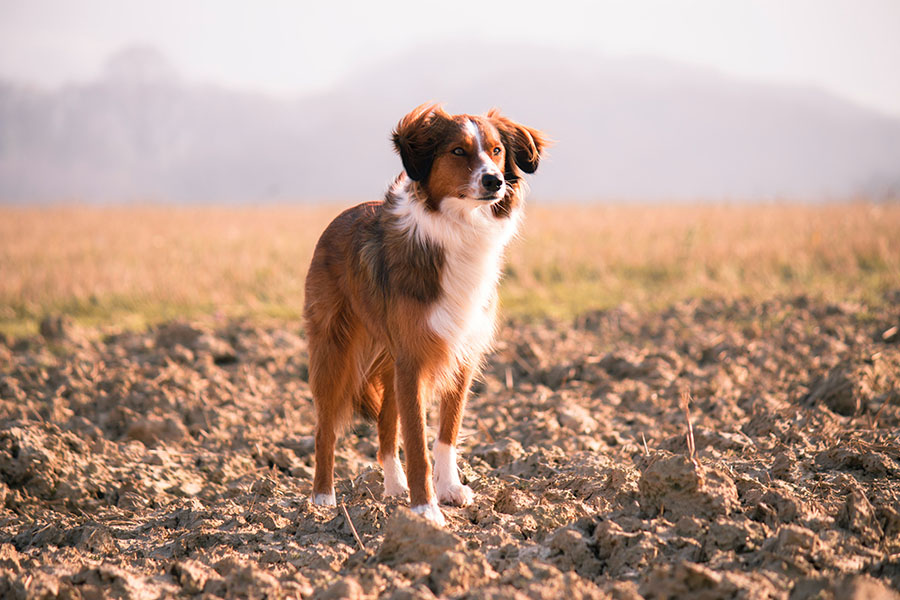
An alert dog’s body language can look similar to relaxed but there are some major differences. Unlike a relaxed dogs ears being up, an alert dogs ear will be pointed forwards as if they are listening for something. They will have a closed mouth that makes them appear focused. The dogs tail will be raised more than a relaxed dog, almost horizontally. Like their ears, the dog’s stance will be leaning forwards towards what they are trying to observe or what their are focused on. This body language comes from them being aware of their surroundings and trying to find the course of action in response to their surrounding whether it be run towards it or run away.
Aggressive

An aggressive dog shows many signs that they are about to or are aggressive before they even act aggressively. There are also two types of aggressive body language — fearful and dominant. With fearful aggression, their ears will be pinned back and their mouth will look as thought they are snarling or growling. They might also lower their body as their fear makes them want to cower but their aggression counteracts that. They will also have their tail tuck which most people know of as a sign of fearfulness. With dominant aggression, there are drastic differences. The dog will be standing upright and be very stiff. The tail of a dominant aggressive dog will be raised completely (almost vertical) and will also be very stiff. The tail is an important thing to watch because it is the main way of telling if your dog is uncomfortable or will possibly attack before it even occurs. The ears on a dominant aggressive dog will also be pointed forwards. A common sign between both of the types that shows aggression is that the dogs hackles will be raised. A dog with longer hair might show this sign easier than others as the hackles are the hair along the dogs spine and neck that can stand up which frightened or aggressive.
Stressed
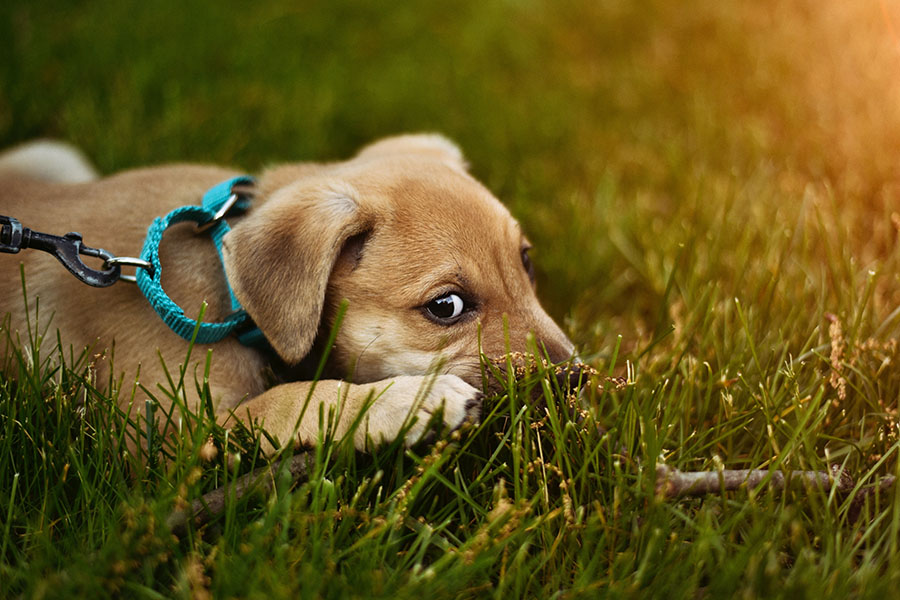
Similar to the fearful aggressive dog, a stressed dog will also have their tail tucked between their legs and their body will be lowered. The dog’s ears will also be pinned back. A good way of instantly realizing if your dog is stressed is that your dog may be panting even though they have exercised or played.
Fearful

There are two types of fearful dogs that range from slightly fearful or extremely fearful which is also known as complete submission. A slightly fearful dog will have their tail not completely tucked but lowered enough where it almost is. They will also have their body lowered and their ears pinned back. Another sign is that their make short and avoidant eye contact with either the dog or the person they are fearful of. A dog that is completely submissive will show a lot more serious signs that their are fearful. A dog like this may lay down and roll on their back. In doing so, they may also pee a little bit out of fear. While laying down like this, their tail will be completely tucked and their ears will be pinned back. The dog will also avoid any eye contact as this is also a sign of dominance.
Playful
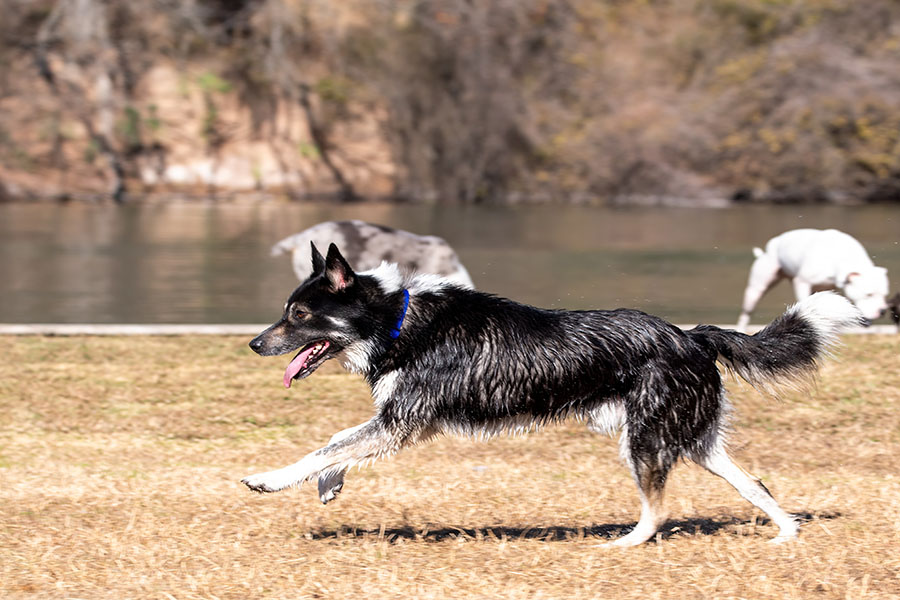
Playful dogs will stand with their butt in the air and their head lowered to the ground almost as if their are bowing down. The tail will be up and probably wagging with excitement. Their ears will also be up and their mouths will be open possibly with their tongue hanging out. These are all signs we have seen in dogs and are clear that they are trying to play. This body language can cause problems however if they are trying to play with an aggressive or fearful dog.
References
- https://moderndogmagazine.com/articles/how-read-your-dogs-body-language/415
February 28, 2022 at 4:54 pm
Understanding body language is very important for dog owners and I feel that this article hit the spot perfectly. Especially understanding body language such as aggression, fearfulness and stress are important so owners can make sure they can avoid these negative emotions. I loved how each emotion is highlighted and gives much insight as to what it looks like and why dogs feel that emotion. As a future dog owner, I love how it provides this sort of insight and I will use this article as reference when understanding these emotions.
March 3, 2022 at 6:07 am
This is a really great post! As a dog owner, I’m really aware of my dog’s body language, but I feel like a lot of people don’t fully understand or know how to pay attention to animals’ body language. I like that you explained and broke everything down. Honestly, there are things in this post that I didn’t fully know! Very interesting information!
March 7, 2022 at 1:46 am
Really good pictures chosen to show the different body languages. Remembering back to when I had a dog, all these explanations seemed right on with how he used to act.